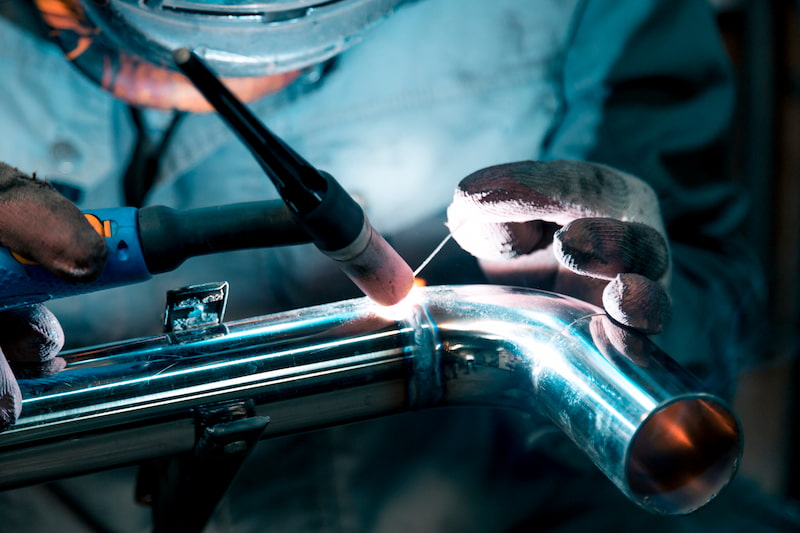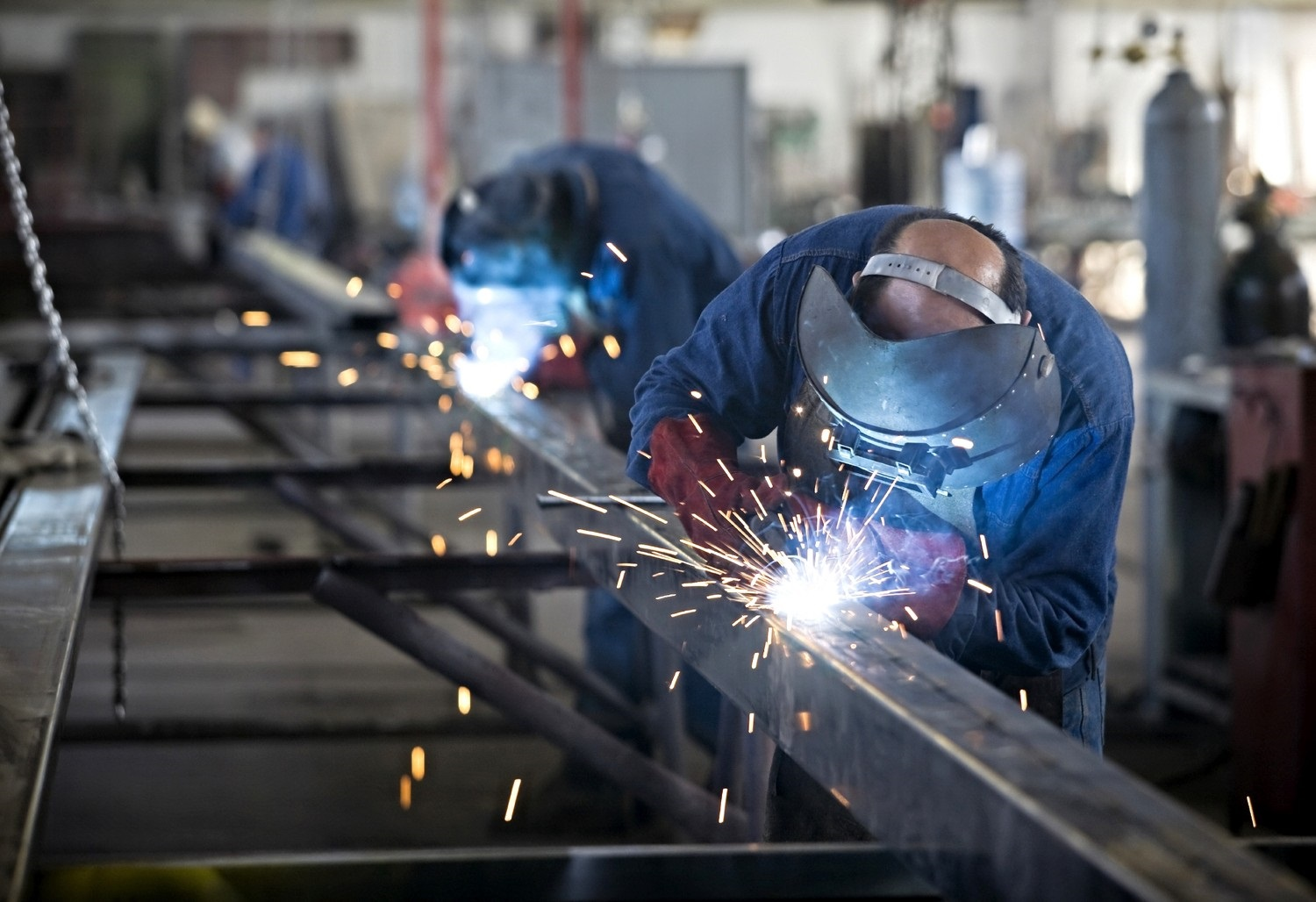All Concerning Welding: Trick Insights Into Techniques and Finest Practices for Success
Welding includes a range of techniques, each suited for specific products and applications. Recognizing these approaches, such as GMAW, SMAW, and TIG, is necessary for accomplishing suitable results. The right tools and safety and security methods can not be forgotten. As prep work and fixing play critical roles in the welding process, understanding these aspects can significantly boost the high quality of the final item. What are the crucial elements that assure an effective weld?
Understanding Various Welding Techniques
Welding strategies include a variety of approaches, each suited to specific applications and products. Among one of the most typical methods are Gas Steel Arc Welding (GMAW), Protected Steel Arc Welding (SMAW), and Tungsten Inert Gas Welding (TIG) GMAW, likewise referred to as MIG welding, is prominent for its rate and convenience, making it optimal for slim products. SMAW, or stick welding, is favored for its simpleness and performance in outside settings, especially with thicker steels. TIG welding offers precision and control, making it ideal for elaborate job and non-ferrous metals (Montana Mobile Welding and Repair Belgrade Fabrication). Each technique has its distinct benefits and considerations, allowing welders to pick the very best technique based upon the project's demands, product kind, and desired outcomes. Comprehending these strategies is vital for successful welding
Important Welding Tools and Devices
While numerous welding methods require certain abilities, the appropriate equipment and tools are just as important for achieving top quality outcomes. Vital welding devices consists of welding equipments, which differ depending on the technique-- such as MIG, TIG, or stick welding. Safety gear, including headgears, aprons, and gloves, warranties safety and security and convenience throughout the procedure. In enhancement, clamps and components assist safeguard products in position, guaranteeing accuracy in welds. Consumables like welding rods, cord, and securing gas are likewise essential elements that influence the top quality of the weld. In addition, tools such as cutters and grinders assist in surface area prep work and post-weld finishing, adding to a professional end result. Investing in top quality devices ultimately boosts the effectiveness and efficiency of welding jobs.
Safety And Security Practices in Welding
Appropriate safety and security methods are essential in the welding industry to secure employees from potential hazards. Welders need to use ideal personal safety devices (PPE), consisting of safety helmets with appropriate shading, handwear covers, and flame-resistant apparel. Sufficient ventilation is crucial to decrease exposure to unsafe fumes and gases produced throughout the welding process. In addition, workers should be educated in the right handling of welding devices to stop accidents. Fire precaution, such as keeping combustible materials far from the welding location and having fire extinguishers conveniently offered, are necessary. Normal examinations of tools and workspaces can help determine prospective risks prior to they lead to mishaps. By adhering to these safety and security methods, welders can create a safer working environment and lessen threats connected with their profession.
Preparing Materials for Welding
Preparing products for welding is an essential action that greatly affects the high quality and integrity of the last product (Belgrade). Appropriate prep work includes cleansing the surfaces to get rid of pollutants such as corrosion, dirt, and oil, which can compromise the weld. Strategies such as grinding, sanding, or using solvents are commonly utilized to accomplish a clean surface area. In addition, ensuring that the materials mesh comfortably is crucial; spaces can result in weak welds. It's additionally vital to take into consideration the placement and positioning of the elements, as this will certainly impact the ease of welding and the last end result. Choosing the ideal filler material and ensuring compatibility with the base steels is essential for achieving solid, durable welds.
Tips for Achieving High-Quality Welds
Attaining top quality welds needs attention to information and adherence to ideal methods throughout the welding procedure. Proper joint prep work is vital, making sure surfaces are tidy and free from contaminants. Selecting the suitable filler material and welding method based on the base steels is crucial for excellent bonding. Maintaining regular travel speed and angle while welding can avoid flaws and advertise harmony. Additionally, controlling warmth input is vital; too much heat can result in bending and deteriorated joints. If required, consistently examining the welds during the process allows for instant changes. Employing appropriate post-weld therapies, such as cleaning and tension relief, can improve the resilience and integrity of the weld, inevitably guaranteeing an effective outcome.
Fixing Usual Welding Issues
Welding often offers challenges that can influence the top quality and integrity of the last item. Typical concerns such as porosity, inconsistent weld grains, and getting too hot can arise, each needing specific troubleshooting techniques. Recognizing these problems is crucial for welders to boost their skills and accomplish suitable results.
Porosity Problems Clarified
Although porosity can frequently be forgotten, it continues to be a vital concern in welding that can jeopardize the honesty of a finished product. Porosity refers to the presence of little gas pockets within the weld bead, which can deteriorate the joint and lead to premature failure. This issue commonly occurs from contaminants, moisture, or improper protecting gas coverage throughout the welding process. To mitigate porosity, welders ought to confirm that the base products are completely dry and clean, make use of suitable protecting gases, and preserve constant welding criteria. Consistently checking the equipment and setting can additionally assist identify potential problems prior to they show up in the weld. Attending to porosity successfully is crucial for attaining solid, resilient welds that meet top quality requirements.

Inconsistent Weld Beans
Irregular weld grains can greatly influence the quality and stamina of a completed product. Different variables add to this problem, including improper travel rate, incorrect amperage setups, and inconsistent electrode angles. When the welder relocates also swiftly, a grain may appear narrow and do not have infiltration, while relocating too slowly can create excessive accumulation. Furthermore, using the incorrect amperage can lead to either try here damaging or too much spatter, both of which concession weld stability. The welder's technique, such as irregular lantern activity, can also lead to unequal grain appearance. To reduce these problems, welders ought to concentrate on preserving consistent, regulated activities and ensuring appropriate devices settings to accomplish uniformity this website in their welds. Consistency is key to attaining dependable and strong welds.
Overheating and Bending Issues
Too much warm during the welding process can lead to significant getting too hot and deforming issues, impacting the structural stability of the workpiece. These problems usually manifest as distortion, which can endanger placement and fit-up, making further assembly challenging. Aspects adding to overheating consist of the option of welding specifications, such as voltage and take a trip rate, in addition to the kind of product being bonded. To alleviate these issues, welders must maintain consistent travel speed and appropriate heat input while checking the workpiece temperature. Furthermore, pre-heating or post-weld warm treatment can assist reduce tensions triggered by rapid air conditioning - Welding. Regular assessment and adherence to ideal methods are necessary in protecting against getting too hot and guaranteeing the durability and dependability of bonded frameworks
Regularly Asked Questions
What Are the Occupation Opportunities in the Welding Market?
The welding market provides diverse profession chances, including placements as welders, instructors, designers, and inspectors. Experts can function in manufacturing, building and construction, aerospace, and auto sectors, profiting from strong need and affordable salaries in numerous duties.
How Can I Enhance My Welding Rate Without Sacrificing Top Quality?
To boost welding rate without giving up high quality, one ought to exercise reliable strategies, maintain equipment, optimize setups, and boost hand-eye sychronisation. Normal training and seeking feedback can likewise greatly add to attaining much faster, top quality welds.
What Accreditations Are Readily Available for Welders?
Many qualifications exist for welders, including those from the American Welding Society (AWS), the National Facility for Construction Education And Learning and Study (NCCER), and various industry-specific organizations. These credentials enhance employability and demonstrate ability proficiency.
Just How Does Welding Affect the Features of Metals?
Welding influences the buildings of steels by modifying their microstructure, which can result in changes in see this site ductility, strength, and hardness. Heat input and cooling rates during the process considerably influence these product features.
Can I Bonded Dissimilar Metals With Each Other?

Comments on “Advanced weld correction methods from Belgrade Welding professionals”